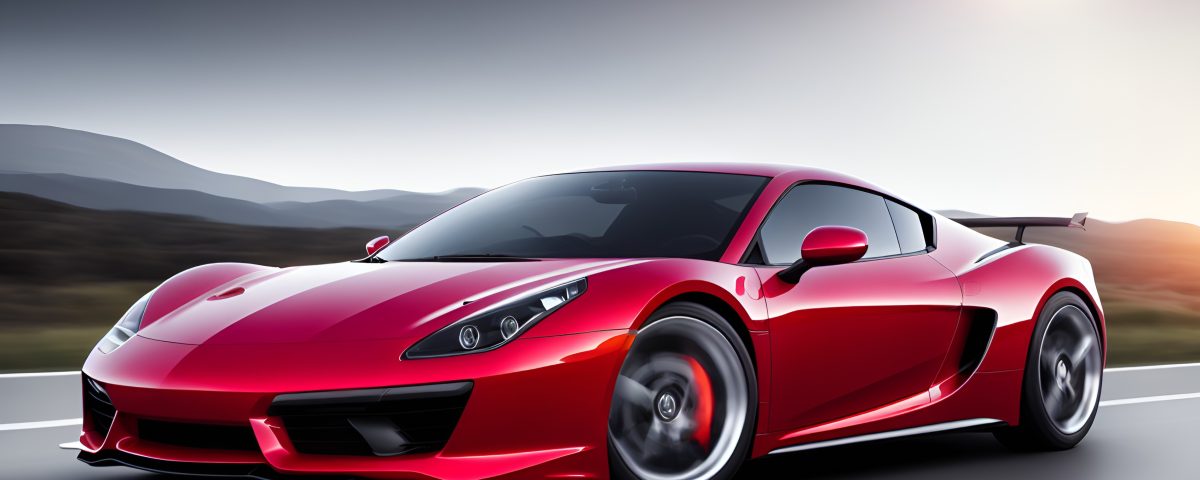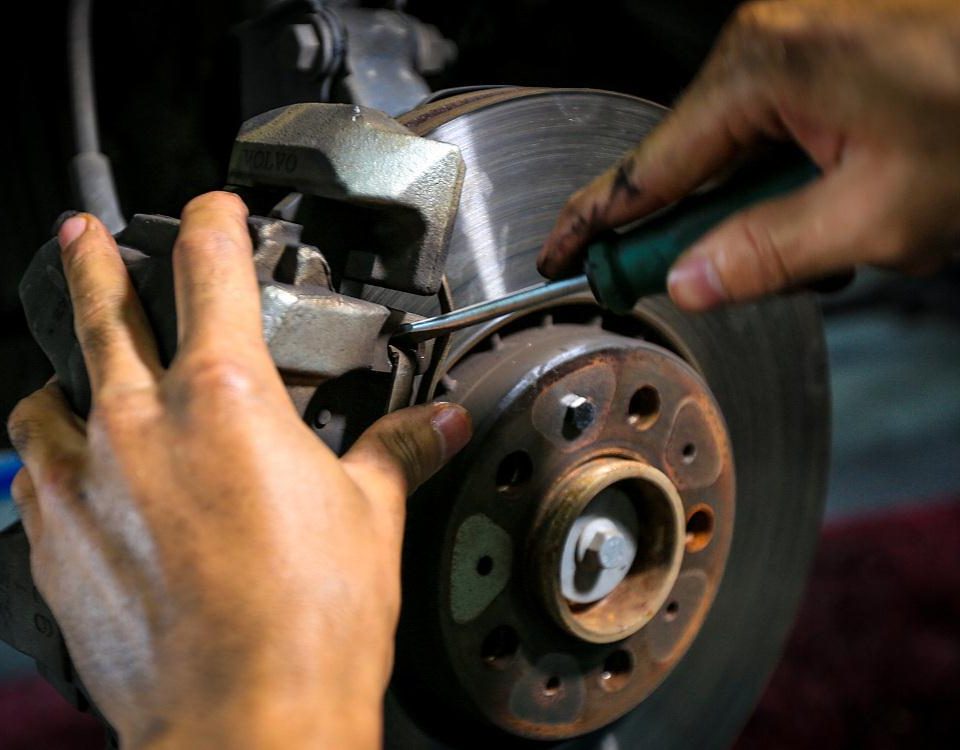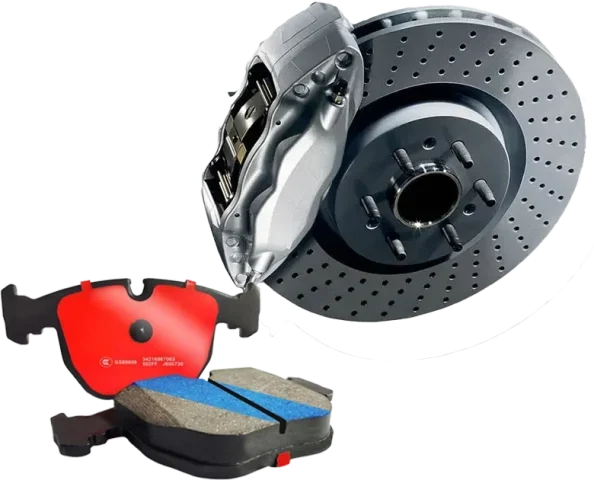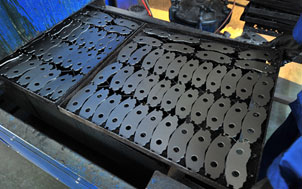- The main function part of the brake pad is the lining, which is often referred to as the friction material block. The first generation of brake pads in the early days is asbestos brake pads. The main component of the friction material is asbestos, also because asbestos is not environmentally friendly and has poor thermal conductivity. , most formulations are now free of asbestos. However, because of the low production cost and light weight, many car companies still use asbestos-containing brake pads when producing commercial vehicles such as trucks and engineering vehicles.
- The second-generation brake pads are semi-metallic brake pads, mainly using iron powder and rough steel wool as friction fibers, which have better thermal conductivity, more powerful braking, and no brake failure at high temperatures. The disadvantage is that the braking comfort is not enough, the wear on the disc and calipers is relatively large, the braking will make a lot of noise, and the braking effect will be weakened when the temperature reaches a certain level.
- In contrast, the third-generation metal-less brake pads have a better braking effect than semi-metal brake pads, are less likely to rattle, and do not damage the disc. The disadvantage is that it is not wear-resistant. Less metal means that the substance contains a small amount of iron, usually steel wool, so its production cost is slightly higher than that of semi-metallic brake pads.
- The fourth generation of ceramic brake pads subverts the concept of ceramic brakes in the traditional sense. Ceramic brake pads are composed of ceramic fibers, iron-free filler substances, adhesives and a small amount of metal. Compared with the previous semi-metal and metal-less brake pads, the advantages of ceramic brake pads are: 1. Small thermal recession. During continuous braking, the brake pads do not deform or melt when the temperature is as high as 500-600 degrees, and still have excellent braking performance. It is manifested in large braking torque and short braking distance. 2. long lasting. The average service life of semi-metallic brake pads is more than 50%. 3. The damage to the counterpart is small. Brake pads have a long service life on the counterpart (brake disc), which is more than 20% longer than that of semi-metallic brake pads. 4. low noise. In the wading state and the salt water road state, there is no squealing sound when braking, and the braking performance is good. So doe s this mean that ceramic brake pads are the best?
- The "good" here depends on which aspect it refers to. What's best for one car model may not be right for another. The best brake material is determined by the model and size of the car, the condition of the car, and the customer's expectations for brake performance, pedal feel, noise, lining life, etc. In short: There is no single friction material formulation that is best for all vehicle types.
According to research: With regard to lining related requirements, customers consider the following aspects to be the most important (in order):
- Braking force
- Good pedaling feeling.
- No noise (no screeches or other annoying noises)
- No vibration when braking.
- Wear resistance
---To meet the above needs, lining suppliers have developed various friction material formulations: ceramic, low-metal, semi-metal, and non-asbestos fiber materials. Some friction materials add ceramic fibers because ceramic fibers are relatively stable and have a predictable effect on the performance of friction materials. In comparison, chopped metal fibers are added to friction materials for heat dissipation, especially for applications that can generate In the high temperature lining.
---The pedaling feeling that the ceramic formula gives the customer is relatively stable, no matter whether the lining is at normal temperature or high temperature, because the friction coefficient of the lining of the ceramic formula decreases slower than that of the semi-metal. At the same time, the noise and vibration of the ceramic formula are relatively small, so the brake is relatively quiet and the damage to the brake disc is small.
In addition, ceramic formula products produce less dust when braking, and the color is very light gray, which can hardly be seen on the wheels. (Unlike some asbestos-free and non-metallic formulas, braking creates a dark gray or black dust behind the wheel.
---It is estimated that 40% of new vehicles sold in North America today are lined with ceramic formulations.
Despite having so many advantages compared to other formulations, ceramic formulations are still not suitable for use in heavy vehicles, such as trucks used to haul and lift goods, and semi-metallic formulations are better for such trucks.
---The friction material of the semi-metal formula has a higher content of steel or iron (up to 50-60%). Compared with the ceramic formula, the low metal formula, and the non-asbestos fiber formula, it can better cope with high temperature. Below 500°C, the wear of ceramic formula products is lower than that of semi-metals. Above 500°C, performance and wear of semi-metallic formulations are best, but noise and brake squeal are inevitably increased.
---In short, it is necessary to consult the lining supplier for the selection of related products. If the original parts used in the car are ceramic, then it is also necessary to replace it with a ceramic formula similar to this. If the original parts used in the car are ceramic, please do not replace them with semi-metallic formulas, which will increase the noise and the wear rate of the brake discs.



